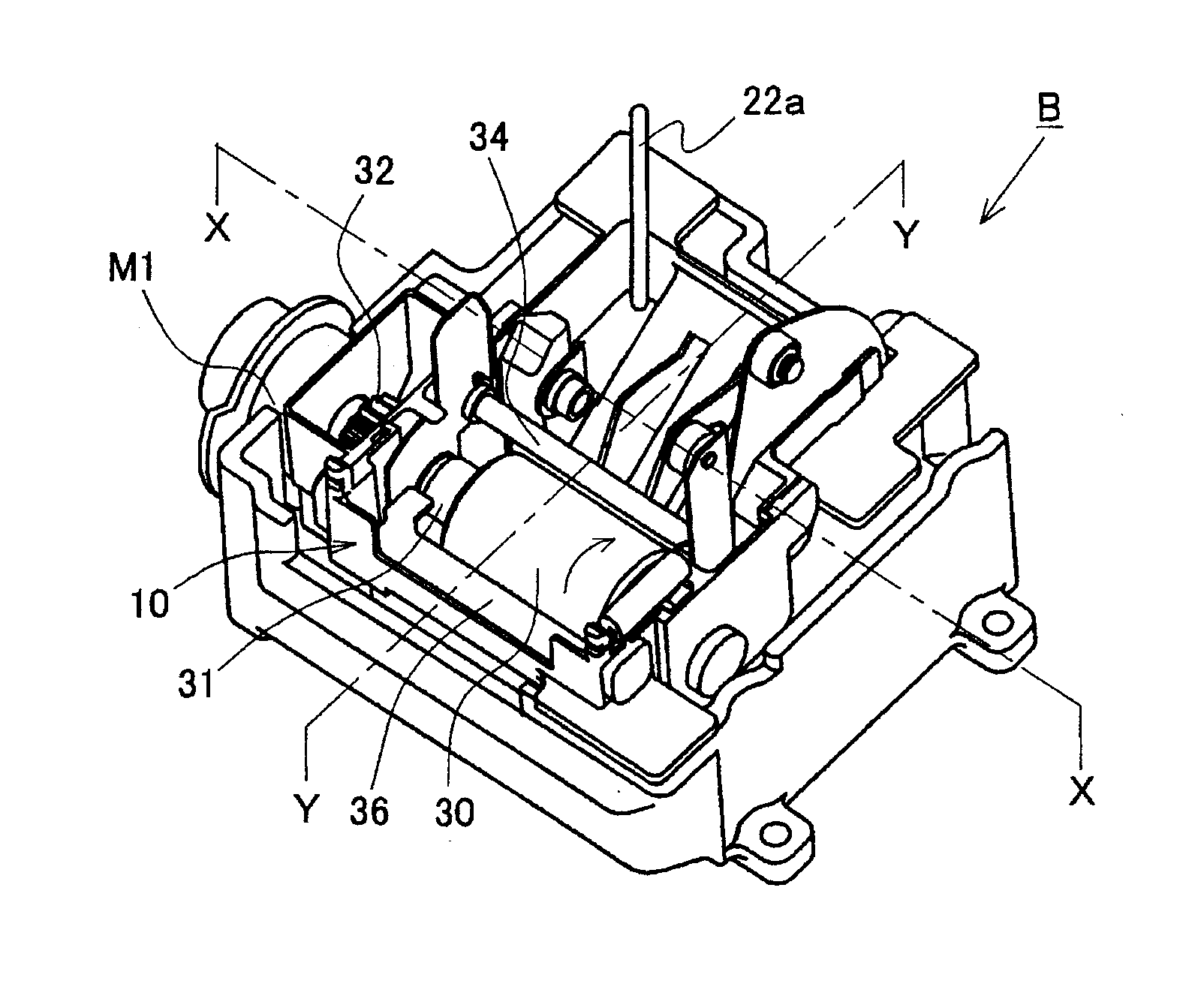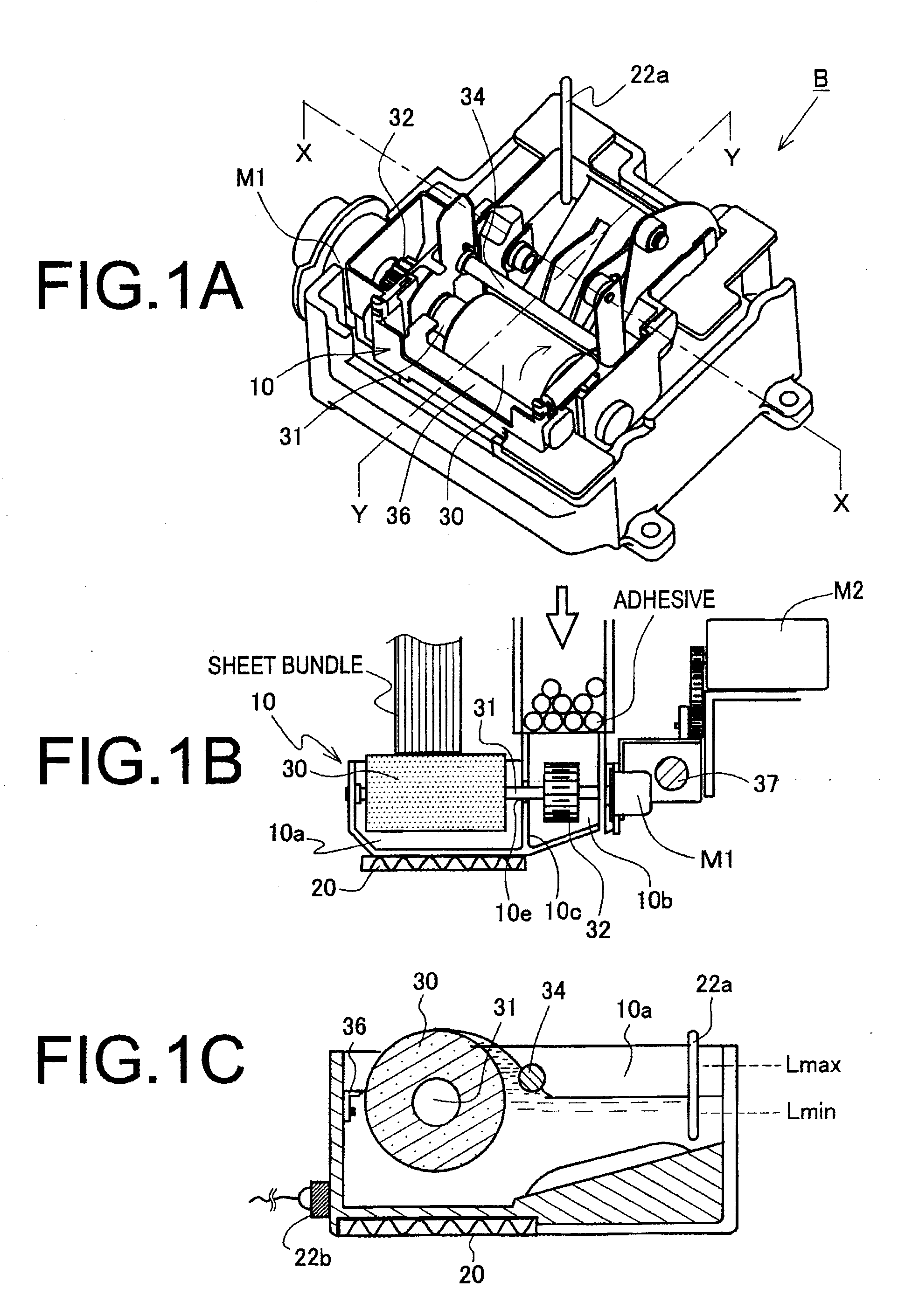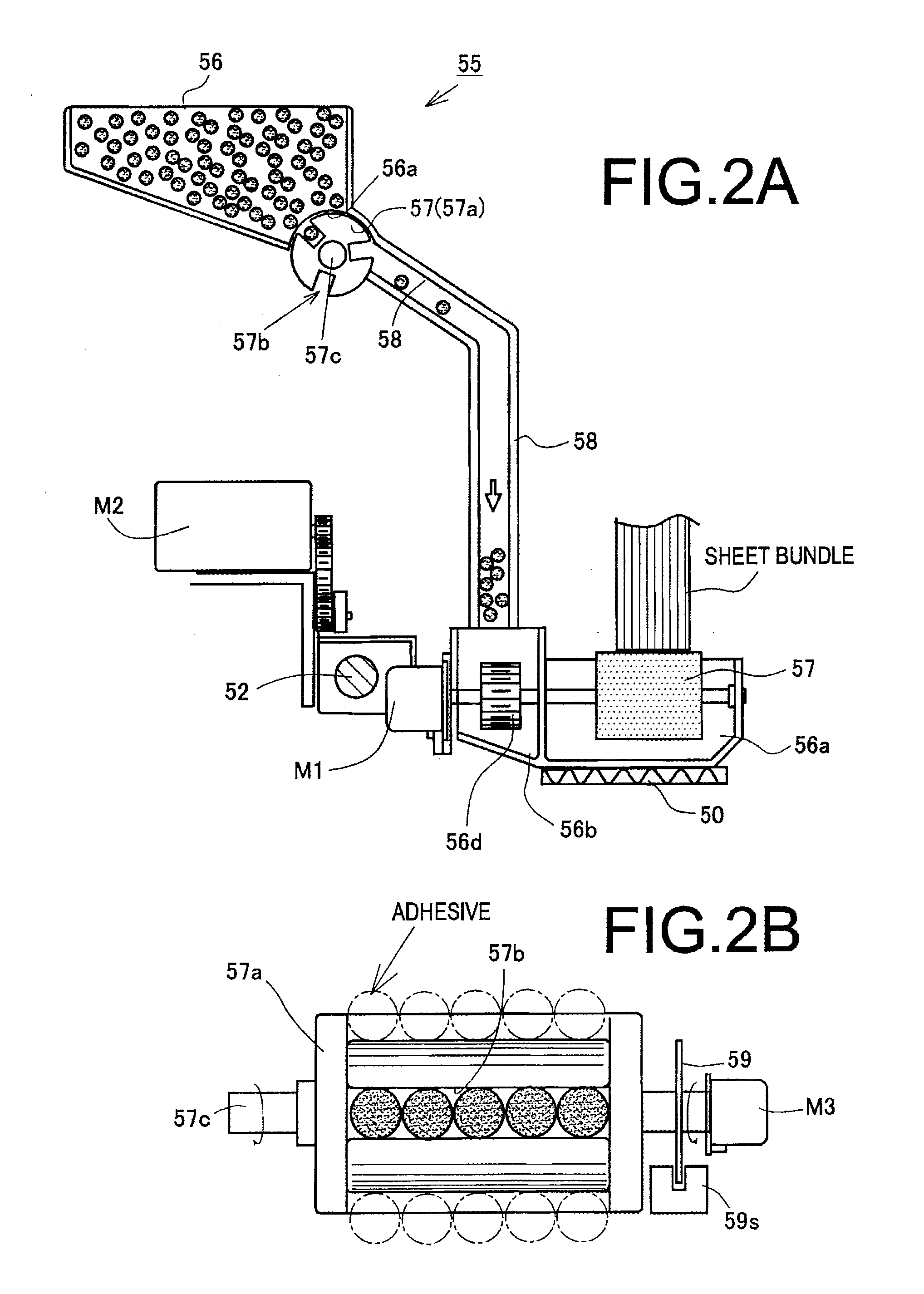Adhesive application apparatus and bookbinding apparatus
- Summary
- Abstract
- Description
- Claims
- Application Information
AI Technical Summary
Benefits of technology
Problems solved by technology
Method used
Image
Examples
embodiment 1
[0066]In the configuration described in conjunction with FIG. 3, the later-described control CPU 60 executes a bookbinding operation by a program (not shown) stored in an ROM. In this process, the applying operation controlling means 66 includes size recognizing means 66S and the application region comparing means 66P. The size recognizing means 66S acquires a sheet size (which is precisely a length Ls of a spine) of a sheet bundle to which the adhesive is applied and bundle thickness (Lt) information of the sheet bundle. In the configuration of the later-described bookbinding apparatus A, the length Ls of the spine is acquired from sheet size information from an image forming apparatus C, and the bundle thickness Lt information of the sheet bundle is obtained from a detection signal from later-described bundle thickness detecting means (not shown). In this manner, the size identification of the sheet bundle to which the adhesive is applied can be acquired from a size of a utilized ...
embodiment 2
[0072]Embodiment 2 will now be described. As shown in FIGS. 5A to 5C, the above-described application roller 30 is rotatably disposed in an accommodating chamber 10a of a glue container 10. An adhesive in an adhesive application layer SL is refluxed in the accommodating chamber 10a while adhering to an outer periphery of a roll along a rotating direction of this application roller 30. A reflux amount restricting member 34 is provided on a downstream side of a rotating direction of this application roller outer periphery. A predetermined gap L is provided between this reflux amount restricting member 34 and the application roller surface. An adhesive amount in the adhesive application layer SL is small when this gap L is large, and an adhesive amount in the adhesive application layer SL is large when the gap L is small. Therefore, the reflux amount restricting member 34 is supported so as to be movable in the glue container 10, e.g., so as to movable through a long hole bearing 40. T...
embodiment 3
[0075]Embodiment 3 will now be explained. As shown in FIGS. 6A to 6C, this Embodiment 3 is configured to increase or decrease a liquid surface level re of an adhesive by changing an adhesive accommodation capacity of an accommodating chamber 10a. Therefore, an accommodated liquid capacity adjusting member 51 is arranged in a liquid accommodating chamber 10a of a glue container 10. This accommodated liquid capacity adjusting member 51 is arranged like a float in a liquid in the accommodating chamber 10a of the glue container 10, and the liquid surface level re is increased from a liquid surface level re1 in FIG. 6A to a liquid surface level re2 in FIG. 6B when this member is immersed in the liquid.
[0076]An occupied position shifting means 52 is provided to the accommodated liquid capacity adjusting member (which is referred to as a float member) 51. This occupied position shifting means 52 includes a support lever 52x that suspends the float member 51 in the accommodating chamber 10a...
PUM
| Property | Measurement | Unit |
|---|---|---|
| Length | aaaaa | aaaaa |
| Time | aaaaa | aaaaa |
| Width | aaaaa | aaaaa |
Abstract
Description
Claims
Application Information
 Login to View More
Login to View More - R&D
- Intellectual Property
- Life Sciences
- Materials
- Tech Scout
- Unparalleled Data Quality
- Higher Quality Content
- 60% Fewer Hallucinations
Browse by: Latest US Patents, China's latest patents, Technical Efficacy Thesaurus, Application Domain, Technology Topic, Popular Technical Reports.
© 2025 PatSnap. All rights reserved.Legal|Privacy policy|Modern Slavery Act Transparency Statement|Sitemap|About US| Contact US: help@patsnap.com



